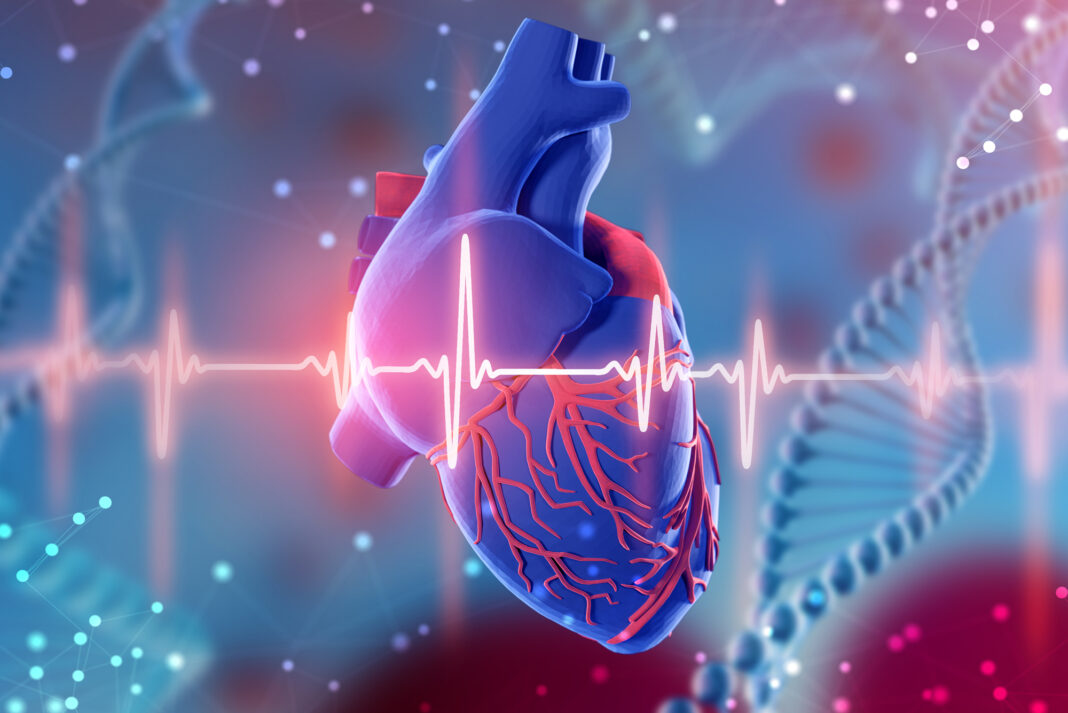A team of Duke scientists studying how animals such as lizards and fish regrow damaged tissues has demonstrated the ability to control gene activity in response to injury, limiting it to a specific region of tissue and during a defined time window, rather than being continuously active in the entire organ. Their gene therapy approach harnessed zebrafish tissue-regeneration enhancer elements (TREEs), delivered systemically using adeno-associated viral (AAV) vectors to direct the expression of genes in a mouse model of heart injury, and improve cardiac function.
The Duke team, headed by said Ken Poss, PhD, the James B. Duke Distinguished Professor of Regenerative Biology in the Duke School of Medicine, reported on their developments in Cell Stem Cell, in a paper titled “An enhancer-based gene-therapy strategy for spatiotemporal control of cargoes during tissue repair.” In their paper, the team concluded, “Importantly, TREEs displayed specificity and efficacy when used as gene-therapy modules in systemically delivered recombinant AAV vectors in mice, including the capacity to localize cardiogenic events and improve cardiac function … Our study provides a foundation for new gene-therapy approaches to improve tissue repair in disease settings.”
If humans are ever going to be able to regrow damaged tissues the way lizards and fish routinely do, it will require the precise control of gene expression in time and place—to prevent random cells growing everywhere or creating a new body part that never quits growing. So, stopping the regenerative process just as important as starting it. But, as the authors explained, “The efficacy and safety of gene-therapy strategies for indications like tissue damage hinge on precision; yet, current methods afford little spatial or temporal control of payload delivery … the abilities to limit gene expression to subregions of tissue, and to establish a temporal window of expression, are priority goals for gene therapy that have not been met.”
Poss discovered heart regeneration in zebrafish two decades ago and has been studying it since. For the newly reported study, the team harnessed zebrafish TREE elements, gene enhancers that are responsible for sensing an injury and orchestrating the activity of repair-related genes for reconstruction in a specific place. Importantly, these enhancers also can shut off gene activity as healing is completed. “Studies in zebrafish have identified tissue regeneration enhancer elements, or TREEs, that can activate expression of their target genes at an injury site, maintain expression during regeneration, and diminish expression as regeneration concludes,” the team continued. About 1,000 nucleotides long, TREE enhancer sequences brim with recognition sites for different factors and stimuli to attach and change gene activity. “We don’t fully understand how they do this and what they’re truly responding to,” Poss noted.
These regulatory elements have been found in fruit flies, worms, and mice as well as the zebrafish. “We probably have them too,” added Poss “But it’s just easier for us to find them in zebrafish and ask if they work in mammals.”
Different cell types within an animal also have different types of these enhancers. “Some of them are responsive in multiple tissues – those are the ones we use here,” noted Poss. “But when we profile regenerating spinal cord or fins in fish, we get different sequences.” There may be tens of thousands of these types of enhancers in the human genome, he added.
As a first step in their 6-year research project, the researchers incorporated several different kinds of zebrafish TREEs into the genomes of embryonic mice. Using a visible marker to indicate gene activity, they found that about half of the enhancers worked as intended and turned tissue blue when and where they sensed tissue injury in the transgenic mammals. “Three of the six zebrafish TREEs we tested … induced reporter expression in injured mice,” the scientists wrote.
The team next wanted to know if they could selectively incorporate the enhancer elements into an adult mouse using adeno-associated viral vector, a familiar gene therapy tool for introducing gene sequences into cells. The vector introduced DNA containing an enhancer to all tissues, but the hope was that the TREEs would only become active in response to an injury.
A series of experiments in heart attack models of mice showed that AAV vectors carrying a TREE could be infused a week before injury and then the enhancer would jump into action when it detected injury. But the researchers discovered that it also worked when introduced to the animal a day or two after the heart attack. “All three TREEs that we tested could be effective if delivered one day or sometimes longer after the injury—they could still target expression to the injury,” Poss said. “Is this method of delivering a TREE and a gene going to allow us to deliver a molecular cargo to the right place at the right time? We found that it does in mice.”
They also used viral vectors to deliver a TREE and a fluorescent marker gene in pigs, which have a much larger heart with a more human-like heart rate. They infused the constructs into the pig hearts through the coronary arteries either before or after a heart attack and again, the marker only glowed at the site of the injury. “These findings indicate that zebrafish TREEs have broad cross-species effects and are capable of targeting gene expression to cardiac injury sites in large mammals,” Poss and colleagues reported.
Next to see if this system could actually repair damage, rather than just sensing damage and turning on a gene that lights up tissue, the investigators delivered a hyperactivated form of YAP, a powerful tissue growth gene that is implicated in cancer. The key question was whether this “really potent hammer” that can make cell division run amok could be lassoed into working only in the right time and place.
For this stage in their research the team used a mutated YAP controlled by a TREE, to evaluate whether they could trigger safe growth of muscle after a heart attack in mice. “The TREE turned on a mutated YAP for a few weeks, just in the injury site, and then it naturally shut down expression,” Poss said. The treatment caused the heart muscle cells— cardiac myocytes—to begin to divide and the mouse’s heart returned to near normal function after several weeks, though not without some scarring. “Intravenously
delivered recombinant AAV vectors designed with a TREE to direct a constitutively active YAP factor boosted indicators of cardiac regeneration in mice and improved the function of the injured heart,” the team stated.
“You really wouldn’t want to express YAP at full blast, that can cause problems like excessive growth, but what we found is that we could direct it,” Poss further noted. “The whole animal gets the gene therapy, but the YAP cargo only gets expressed at measurable levels when and where you injure the heart. We think we can use these methods to control genes in a certain time and certain space, and that includes shutting them off.”
Reporting on their studies, the team concluded, “In total, our findings indicate that zebrafish TREEs present in systemically delivered viral vectors can guide expression of known proregenerative factors to injury sites, selectively boosting CM-regeneration indicators and leading to measurable improvements in cardiac function.”
The next task for the researchers will be to better understand which molecules bind to the enhancers, what controls their functions, and where they are located in the human genome, in addition to improving their targeting abilities. “These control elements are what’s important,” Poss said. “Zebrafish have largely the same genes that we do, but their ability to regenerate the heart is a function of how they control those genes after a massive injury … And what about other injury models? Can this work for traumatic brain injury or spinal cord injury?”
The authors further noted, “As we report here, TREE-regulatory elements contain natural instructions within short sequences to monitor injury and dynamically control amounts, range, and duration of dosing in mammalian injury contexts. TREE instructions can be delivered noninvasively through vasculature, simplifying delivery methods that are currently problematic for tissues like the heart



